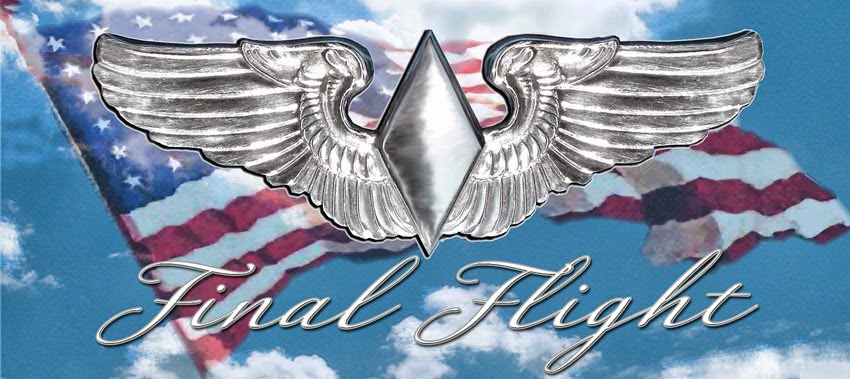"The estetic, spiritual, recreation, and educational values of such an area (proposed Artic National Wildlife Range) are those one cannot put a price tag on any more than one can on a sunset, a piece of poetry, a symphony, or a friendship."
Ginny Hill Wood Testimony to Congress Fairbanks, 1959
 |
| Ginny Hill, WASP class 43-W-4
Conservation and aviation pioneer, Virginia "Ginny" Hill Wood passed away at her Fairbanks, Alaska log home on March 8, 2013. *"Her vision and perseverance is woven into the fabric of our lives here, from beloved ski and bike trails, Creamer's Field Refuge and Camp Denali, the early wilderness ecoturism center, to the cherished Artic National Wildlife Refuge and other conservation areas throughout Alaska." /s/Pamela A. Miller.
Virginia Hill was born on October 24, 1917 in Moro, Oregon. She grew up in rural Washington, spending time at the family's cabin on Lake Chelan and at the experimental farm where her father worked. She fell in love with flying at age 10, and followed the national news reports of Charles Lindbergh and Amelia Earhart.
Ginny learned to fly through the Civilian Piot Training Program in 1940-41. When she heard about the WASP training program, she applied, and was accepted into the fourth class of WASP (43-W-4), and reported to Houston, Texas for training. Class 43-W-4 was the largest class of WASP trainees, with 151 young women pilots enrolled. Shortly after her class arrived, all of the flying training was moved from Houston to Avenger Field in Sweetwater, Texas.
After passing all the requirements, Ginny and one hundred eleven other young women pilots graduated, August 7, 1943. She was given Army orders to report to the 6th Ferrying Group, Air Transport Command in Long Beach, California. As a ferry pilot, she flew BT-13's, C-47's, AT-20's, B-25's P-40's, P-47's, P-51's, P-39's, P-63's, P-61's P-38's and co pilot on the B-17. Her temporary duty assignments were to instrument school in St. Joseph, Missouri; pursuit school in Brownsville, Texas, and officer's training in Orlando, Florida.
After the WASP were deactivated, she instructed on seaplanes on Lake Washington, Seattle. On Jan 1, 1947, Ginny and WASP Celiea Hunter ferried two surplus military planes from Seattle to Alaska. When the temperature dropped to sixty below zero, there were no return flights to Seattle and the two WASP stayed in Alaska.
Ginny worked for Chuck West's Alaskan tour business and flew tourists to Kotzebue for Wien Airlines. In 1948, Ginny and Celia spent a semester in Sweden as exchange students and bicycled around Europe. They returned to Alaska and in 1950, Ginny married Morton "Woody" Wood, who she met on the Birch Hill ski slope. In the summer of 1951, Woody's job as park ranger took the young couple to Katmai National Moument where they explored the country and enjoyed the rich recrecational opportunities.
In 1952, Ginny and Woody, along with Celia Hunter, founded Camp Denali, one of Alaska's first eco-tourism lodges. For the next twenty-five years, Ginny spent every summer at Denali National Park, leading backcountry hiking trips.
Later called one of the matriarchs of Alaska conservation, Ginny spent the next forty years fighting to protect the wild places and wildlife of Alaska. Her causes included wolf bounty, Project Chariot, Rampart Dam, the trans-Alaska oil pipeline, Alaska National Interest Lands Conservation Act and protecting the Artic National Wildlife Refuge from oil develpment. She helped start the Alaska Conservation society, the state's first environmental organization and her column, "From the Woodpile," was published in the Northern Alaska Environmental Center's newsletter for twenty three years.
Her selfless work in the field of conservation was recognized not only by her peers, but by national organizations, including The John Muir Award (The Sierra Club's highest honor), The Alaska Conservation Foundation firstever Lifetime Achieve Award (to Ginny and Celia Hunter), the Florence Collins Award for her lifetime contribution to the environment of the interior and Artic Alaska, and US Fish & Wildlife Service's Citizen's Award.
In 2010, Ginny and her sister WASP were awarded the Congressional Gold Medal, the highest civilian award Congress can bestow, for their pioneering military service flying for the Army Air Forces during World War II. In 2011, she was inducted into the Alaska Women's Hall of Fame (Class of 2010).
In 2012, "Boots, Bikes and Bombers" was published as an intimate biography of Ginny Hill Wood, edited by friend Karen Brewster.
|
 |
| Ginny Wood -- photo credit, Alaska Daily News |
Gifts in Ginny's honor may be sent to the Northern Alaska Environmental Center.
Ginny's legacy lives on in the beauty of an Alaskan sunset and the clear crystal waters of a mountain stream. Generations to come owe her a debt they can only repay by carrying the torch and sharing her vision.
May we all learn from Ginny to appreciate God's great blessings on this world, and take great care of what we have been given.
God bless all of those who have been touched by the passion of this extraordinary WASP.
Respectfully written and posted by Nancy Parrish
Resources:
Camp Denali North Face Lodge - historic film footage and interview w/ Ginny.
"Out of the Blue and Into History" by WASP Betty Turner
* "Ginny Hill Wood, 95, passes on lasting wilderness legacy" by Pamela A. Miller
Newsminer.com obituary

What a beautiful lady . God Bless her family and friends that knew her . She is one of a kind from the WASP .
ReplyDeleteI had forgotten about the many wonderful things Ginny Hill Wood and Celia Hunter accomplished in their lifetimes. This is a marvelous article about Ms.Woods and her efforts to help us all leave a smaller footprint by living a sustainable lifestyle. Her work on environmental issues will impact many future generations if we all do our part and follow her example.
ReplyDelete